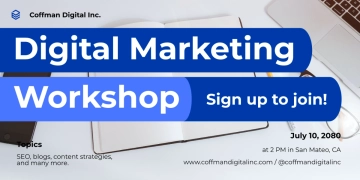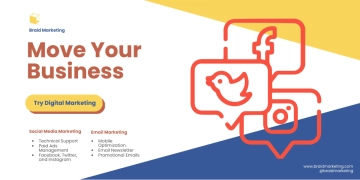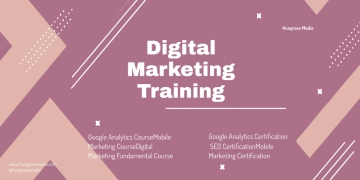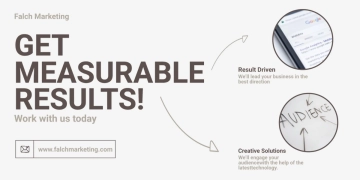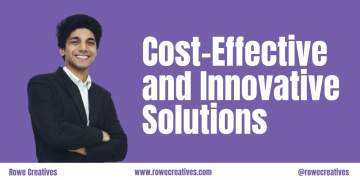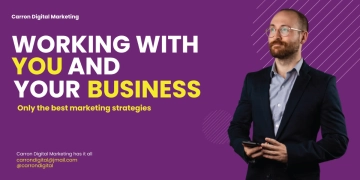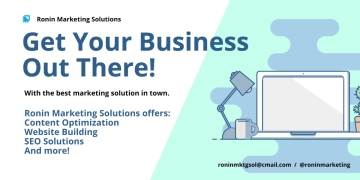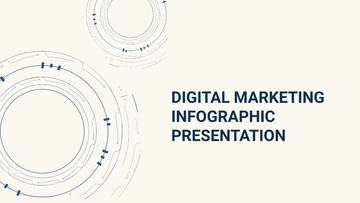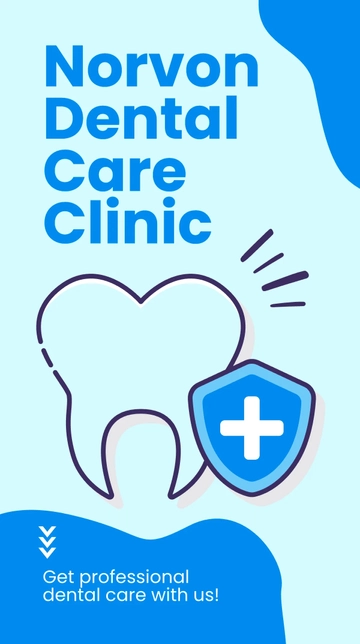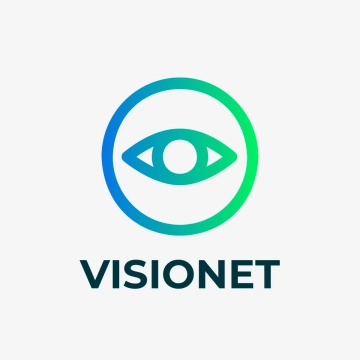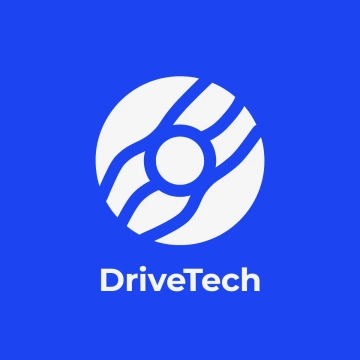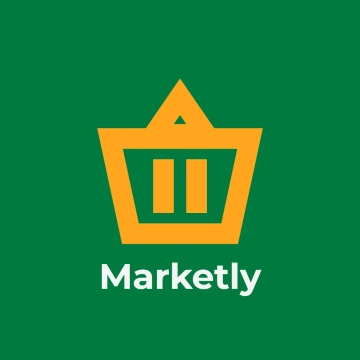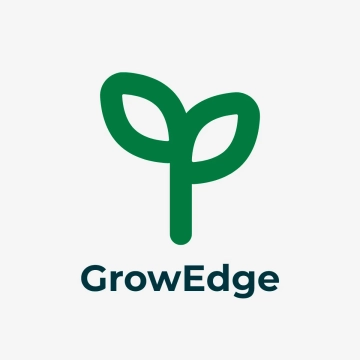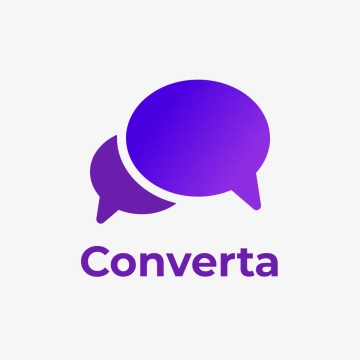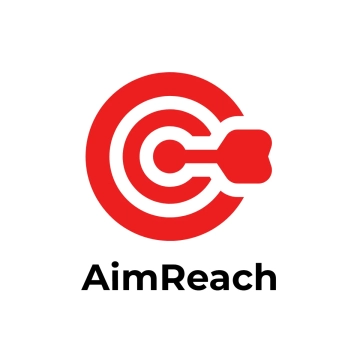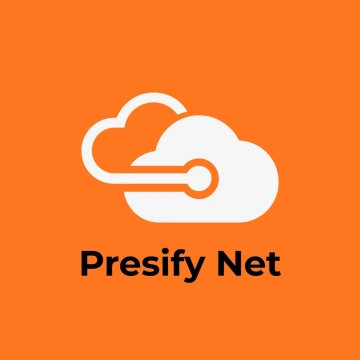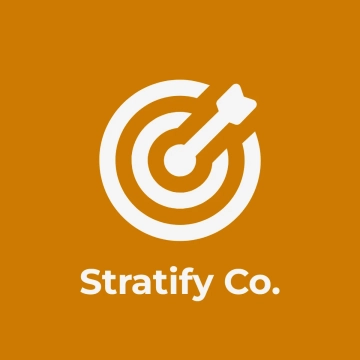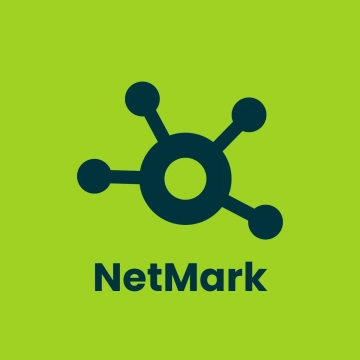Free Digital Marketing Campaign Strategy
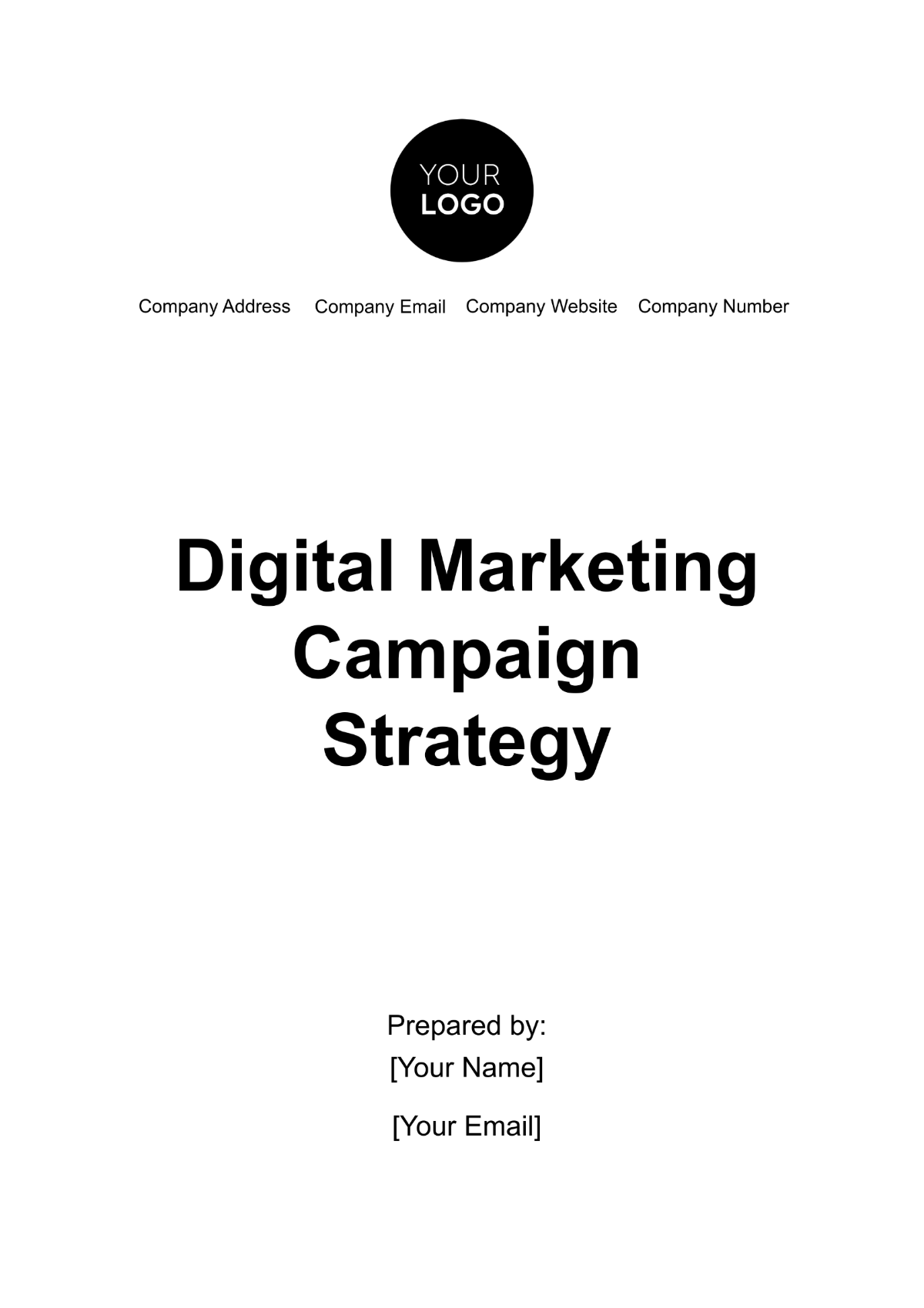
I. Campaign Objectives and Goals
The primary objective of this campaign is to enhance the visibility of [Your Company Name] across digital platforms. This includes increasing brand recognition, familiarity, and establishing [Your Company Name] as a trusted name within the industry. The campaign will focus on engaging content and consistent messaging to boost our brand presence across key channels such as social media, Google search, and online forums.
Key Goals:
Achieve a 25% increase in brand mentions and engagement across social platforms over a 6-month period.
Boost website traffic by 20% through targeted content and paid media ads.
2. Lead Generation
The campaign will focus on driving qualified leads to [Your Company Name]’s website or landing pages. Through data-driven strategies, we will identify our target audience and create specific offers that address their needs. Email marketing, PPC ads, and lead magnets (like eBooks or webinars) will be used to capture leads.
Key Goals:
Generate 500 new leads within the first 3 months.
Achieve a conversion rate of 8% from lead to customer over the campaign duration.
3. Sales Growth
This campaign will focus on increasing sales by promoting our products/services to both existing and potential customers. We will utilize cross-channel strategies, including retargeting ads, special promotions, and personalized offers.
Key Goals:
Achieve a 15% increase in overall sales within 6 months.
Reduce cart abandonment rates by 10% by implementing improved checkout processes and targeted email follow-ups.
4. Customer Retention
We aim to improve customer loyalty by enhancing communication and providing value-added content. Email marketing, customer loyalty programs, and engagement on social media will play key roles in fostering strong, long-term relationships with our clients.
Key Goals:
Improve customer retention rates by 10% within 6 months.
Increase email open rates to 25% and click-through rates (CTR) to 12% by implementing personalized, segmented email marketing campaigns.
5. Market Expansion
This campaign will focus on expanding our reach into new market segments, whether by targeting a specific demographic or geographical area. This will include research, competitor analysis, and tailored content that speaks directly to these new audiences.
Key Goals:
Enter 3 new market segments and achieve measurable traction within 6 months.
Capture 5% of market share in the new segments by the end of the campaign.
6. Compliance and Ethical Marketing
Throughout the campaign, we will ensure adherence to US marketing laws and standards, such as the CAN-SPAM Act (for email marketing), FTC guidelines (for advertising disclosures), and GDPR (if applicable). This ensures that our efforts are ethical, transparent, and compliant with data privacy regulations.
Key Goals:
Maintain 100% compliance with email marketing and advertising laws.
Implement a clear privacy policy and transparent opt-in/opt-out mechanisms across all digital marketing efforts.
II. Audience Segmentation and Personas
Understanding and defining your audience is fundamental to the success of any digital marketing campaign. Effective audience segmentation allows us to target specific groups with personalized messages, increasing engagement and conversion rates. By identifying distinct segments within our audience, we can craft tailored marketing strategies that resonate with each group’s unique needs, behaviors, and preferences. This precision leads to more efficient use of resources and a higher return on investment (ROI).
The following table outlines key audience segments based on demographic, psychographic, and behavioral characteristics. For each segment, we also provide corresponding buyer personas to better understand their motivations and challenges, ensuring that our marketing efforts align with their specific desires and pain points.
Segment | Demographics | Psychographics | Behavior | Buyer Persona |
|---|---|---|---|---|
Young Professionals | Age: 25-34, Urban areas, College-educated, Income: $50K-$80K | Values career growth, seeks convenience, tech-savvy | Engages with content on LinkedIn, shops online frequently | "Career-Climber Claire": Ambitious, time-poor professional looking for products/services that save time and enhance productivity. |
Small Business Owners | Age: 35-50, Income: $80K-$150K, Owns small/medium business | Entrepreneurial mindset, risk-tolerant, cost-conscious | Researches products/services extensively before purchasing | "Resourceful Rick": Needs affordable, high-quality solutions to grow their business. Trusts brands with strong reputations and reviews. |
Parents (Millennials) | Age: 30-40, Suburban, Income: $60K-$100K, Married with kids | Family-oriented, health-conscious, values work-life balance | Active on social media (Facebook, Instagram), compares products based on reviews | "Busy Brenda": Prioritizes convenience and quality, seeking solutions that simplify family life without compromising values. |
III. Marketing Channels and Platforms
A successful digital marketing campaign requires selecting the right channels and platforms to reach your target audience. This ensures that content is delivered effectively, engaging customers at different touchpoints throughout their online journey. Below are the primary channels and platforms that will be utilized for the campaign, each chosen based on the audience segments identified in the previous section.
1. Social Media Marketing
Social media platforms are key to building brand awareness, driving engagement, and fostering relationships with customers. Each platform will be utilized based on its strengths and audience demographics:
Facebook & Instagram: Ideal for reaching Millennial parents, small business owners, and retirees. These platforms will be used for targeted ads, organic posts, and video content showcasing [Your Company Name]’s products/services.
LinkedIn: As a professional network, LinkedIn is crucial for reaching young professionals and small business owners. It will be used to share thought leadership content, case studies, and industry insights.
TikTok & Snapchat: These platforms are optimal for engaging Gen Z students with short-form, visually appealing content that highlights brand values in a fun, interactive way.
2. Search Engine Marketing (SEM)
SEM will include both organic search (SEO) and paid search (PPC) strategies. Through targeted keywords and high-quality content, SEO will drive long-term visibility on search engines, ensuring [Your Company Name] ranks high for relevant searches. Pay-per-click (PPC) ads will provide immediate results by appearing at the top of search engine results pages (SERPs) for specific, high-intent queries.
3. Email Marketing
Email marketing remains a powerful channel for nurturing leads, retaining customers, and driving conversions. Personalized, segmented email campaigns will be deployed to target specific audience segments, offering tailored content, promotions, and product recommendations. Compliance with the CAN-SPAM Act will be strictly enforced, ensuring that all communications are legally sound.
4. Content Marketing
Blog posts, eBooks, infographics, and videos will be developed to educate and engage potential customers across all stages of the buyer’s journey. The content will be optimized for SEO, driving organic traffic and establishing [Your Company Name] as a thought leader in the industry.
5. Influencer Marketing
Collaborating with influencers on platforms like Instagram and TikTok will help build credibility and expand reach, particularly for Gen Z and Millennial audiences. Influencers who align with [Your Company Name]’s values and products will be selected to create authentic, engaging content that resonates with their followers.
IV. Content Strategy
A robust content strategy is essential for engaging your target audience and driving the desired outcomes from your digital marketing campaign. By creating and distributing valuable, relevant, and consistent content, [Your Company Name] will build trust, encourage conversions, and foster brand loyalty. Here’s an overview of the content strategy, including key components and tactics:
1. Content Types
Blog Posts: Regularly updated blog content will address industry trends, provide solutions to common problems, and share insights relevant to our target audience. Blog posts will be optimized for SEO, incorporating keywords to enhance organic search visibility.
Videos: Engaging videos will be created for social media and the company website. These will include product demos, customer testimonials, and educational content to capture attention and drive engagement. Short-form videos will target Gen Z and Millennial audiences on platforms like TikTok and Instagram.
Infographics: Visually appealing infographics will be used to simplify complex information and data. They will be shared on social media and embedded in blog posts to increase shares and drive traffic.
eBooks and Whitepapers: In-depth, downloadable resources will be offered as lead magnets to capture contact information and nurture leads. These will provide comprehensive insights and actionable advice relevant to our audience’s needs.
2. Content Calendar
A detailed content calendar will be developed to ensure a consistent flow of content across all platforms. This calendar will outline publication dates, content themes, and responsible team members. It will include key dates and events relevant to the industry and audience, such as product launches, holidays, and seasonal promotions.
3. Content Distribution
Effective content distribution is crucial for maximizing reach and impact:
Social Media: Content will be tailored for each platform’s audience and format. Regular posting schedules will be maintained to keep the audience engaged.
Email Newsletters: Targeted email campaigns will deliver personalized content directly to subscribers, promoting new blog posts, upcoming events, and exclusive offers.
Partnerships: Collaborations with industry influencers and thought leaders will amplify content reach and credibility. Guest posts and joint content initiatives will be explored.
4. Performance Monitoring and Optimization
Continuous monitoring of content performance will be conducted using analytics tools. Key metrics, such as engagement rates, click-through rates (CTR), and conversion rates, will be analyzed to determine content effectiveness. Insights gained will inform adjustments and optimizations to improve content quality and relevance.
By implementing this comprehensive content strategy, [Your Company Name] will ensure that all content efforts are aligned with campaign objectives, driving meaningful engagement and results.
V. Budget Allocation
To ensure the success of our digital marketing campaign, a well-planned budget is crucial. Allocating funds effectively across various aspects of the campaign allows for optimal use of resources and maximizes return on investment (ROI). By strategically distributing the budget, we can focus on the most impactful platforms and tactics, supported by data from previous campaigns and industry benchmarks.
The table below outlines the proposed budget allocation for the campaign, detailing expenditures for advertising, content creation, software tools, and personnel. This breakdown will guide financial planning and ensure that resources are invested where they will yield the greatest results.
Budget Category | Estimated Cost | Percentage of Total Budget |
|---|---|---|
Ad Spend | $30,000 | 40% |
Content Creation | $15,000 | 20% |
Software Tools | $8,000 | 10% |
Personnel Costs | $20,000 | 25% |
Training & Development | $2,000 | 2.5% |
Contingency Fund | $5,000 | 7.5% |
Total Budget: $80,000
This budget allocation ensures comprehensive coverage of all critical campaign components, enabling [Your Company Name] to execute a well-rounded and effective marketing strategy.
VI. Legal Compliance and Data Privacy
Ensuring legal compliance and data privacy is essential to maintaining trust and avoiding potential legal issues in digital marketing campaigns. Adhering to relevant regulations protects both [Your Company Name] and its customers, ensuring that all marketing practices are ethical and transparent.
1. Compliance with Advertising Laws
All advertising efforts must adhere to the Federal Trade Commission (FTC) guidelines, which require clear and truthful advertising. This includes avoiding misleading claims, disclosing any material connections with influencers, and ensuring that all sponsored content is clearly identified as such. Compliance with the CAN-SPAM Act is also mandatory for email marketing, which involves providing clear opt-out options and honoring unsubscribe requests promptly.
2. Data Privacy Regulations
Compliance with data privacy laws, including the California Consumer Privacy Act (CCPA) and General Data Protection Regulation (GDPR) if applicable, is crucial. These regulations require obtaining explicit consent for collecting and processing personal data, providing clear privacy policies, and allowing users to access, correct, or delete their data upon request. Regular audits should be conducted to ensure that data protection practices are up to date and effective.
3. Security Measures
Implement robust security measures to protect user data from breaches or unauthorized access. This includes using secure data storage solutions, implementing encryption protocols, and regularly updating software to address vulnerabilities.
VII. Performance Metrics and Reporting
Measuring the effectiveness of a digital marketing campaign is crucial for assessing its success and making data-driven decisions. Performance metrics and regular reporting provide insights into how well the campaign is achieving its objectives and where adjustments may be needed.
1. Key Performance Indicators (KPIs)
Brand Awareness
Impressions: | The total number of times content is displayed to users. |
Reach: | The number of unique users who see the content. |
Social Media Engagement: | Likes, shares, comments, and overall interaction with social media posts. |
Lead Generation
Lead Volume: | Number of new leads generated through forms, downloads, or sign-ups. |
Conversion Rate: | Percentage of leads that convert into paying customers. |
Cost Per Lead (CPL): | The average cost of acquiring a new lead. |
Sales Growth
Revenue: | Total sales revenue generated from the campaign. |
Return on Ad Spend (ROAS): | The revenue generated for every dollar spent on advertising. |
Cart Abandonment Rate: | Percentage of users who add items to their cart but do not complete the purchase. |
Customer Retention
Customer Retention Rate: | Percentage of existing customers who make repeat purchases. |
Email Open and Click-Through Rates: | Metrics for email marketing performance, indicating how engaging and effective the email content is. |
2. Reporting Frequency and Tools
Weekly Reports: Track short-term performance trends and make quick adjustments if needed. Include metrics such as social media engagement, website traffic, and ad performance.
Monthly Reports: Provide a comprehensive overview of campaign performance, including ROI analysis, lead generation, and sales metrics.
Quarterly Reviews: Conduct in-depth analysis to assess overall campaign success, identify long-term trends, and strategize for future campaigns.
Utilize analytics tools like Google Analytics, social media insights, and CRM software to gather and analyze data. Regular reporting ensures that [Your Company Name] can optimize marketing strategies based on real-time insights and achieve campaign goals effectively.
This Digital Marketing Campaign Strategy provides a comprehensive roadmap to achieving [Your Company Name]’s objectives through targeted audience engagement, strategic channel utilization, and robust content creation. By adhering to legal compliance and focusing on key performance metrics, we ensure that our efforts are both effective and ethically sound. With a clear budget allocation and a commitment to data privacy, we are positioned to maximize ROI and drive meaningful results. Implementing this strategy will not only enhance brand visibility but also foster stronger connections with our audience, paving the way for sustained growth and success.
- 100% Customizable, free editor
- Access 1 Million+ Templates, photo’s & graphics
- Download or share as a template
- Click and replace photos, graphics, text, backgrounds
- Resize, crop, AI write & more
- Access advanced editor
Plan and execute successful campaigns with the Digital Marketing Campaign Strategy Template from Template.net. This editable and customizable template helps structure your marketing efforts for maximum impact. Fully editable in our Ai Editor Tool, it provides a professional and tailored format to align your strategies with your digital marketing goals.




